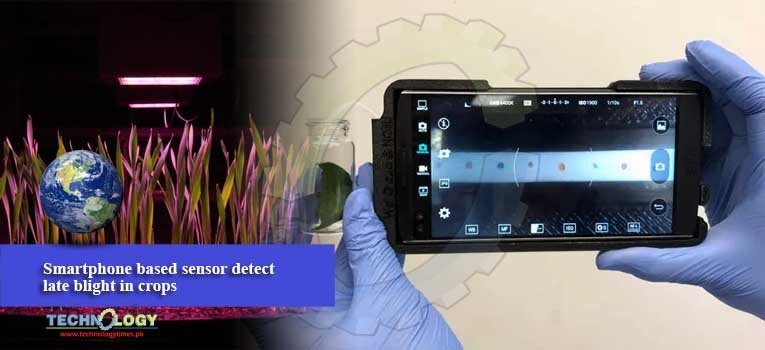Seeing, the revolutionary and impactful areas of modern agri-technology researchers come up with a smartphone-based sensor, a tomato leaf is tested for late blight, a pathogen that causes billions of dollars in agricultural losses annually.
 Researchers at North Carolina State University, relies on the science of subtle plant odors, and it can recognize sick plants early by employing a simple test strip that plugs into a reader on a smartphone.
Researchers at North Carolina State University, relies on the science of subtle plant odors, and it can recognize sick plants early by employing a simple test strip that plugs into a reader on a smartphone.
Plants emit signaling chemicals from their leaves, not unlike the pheromones released by humans. “If a plant is diseased, the type and concentration of these volatile organic compounds changes,” said Qingshan Wei, a biomolecular engineer at NC State University.
By sampling a plant’s emission profile, a farmer can assess whether or not a sample of their crop is infected. If the farmer suspects a late blight infection is underway, can remove a leaf from a living plant and place it in a small, covered glass jar.
After the leaf’s volatile compounds have accumulated for 15 minutes or so, the cap is removed and the air is pumped from the jar into a reader device attached to the back of a smartphone.
Inside the smartphone reader is a strip of paper specially treated with organic dyes and nanoparticle sensors developed by the researchers. Upon interacting with the plant’s volatile compounds, the strip changes color to indicate the presence or absence of the pathogen. It’s like a home-pregnancy kit for tomatoes, or a strep test for tubers.
Dr. Wei and his team found that the technology could accurately detect changes in 10 different plant odor molecules just two days after plants were inoculated with the pathogen the causes late blight, even before the effects were visible to the eye.
Dr. Wei estimated that the team’s prototype reader cost about $60 to make in the lab. The researchers used a 3-D printer to create a reader cartridge that fits on the back of a smartphone and allows plant odors to interact with test strips in a leak-free space.
The test strips had to be designed with sensors and dyes that would remain stable for a long period of time and cost just a few cents per strip, Dr. Wei said.
The team hopes to customize the technology for other crop pathogens, which continue to emerge as climate change and global trade increase the stress on agricultural systems.